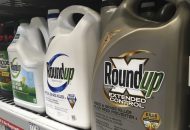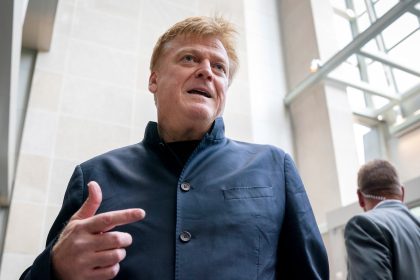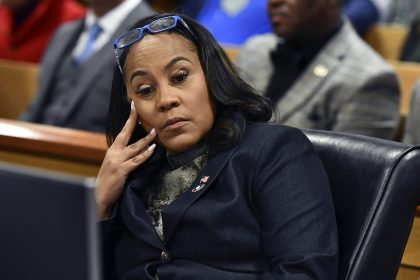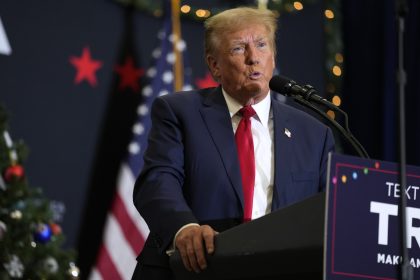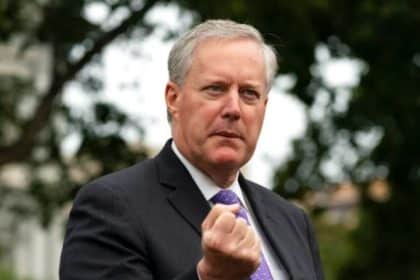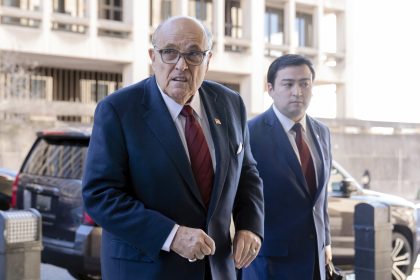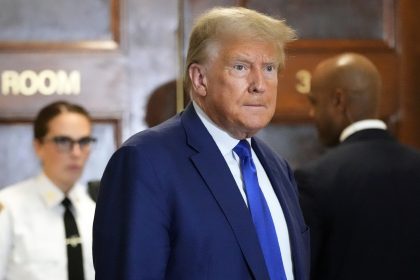Minnesota, the Battleground State That Became Ground Zero for Civil Unrest
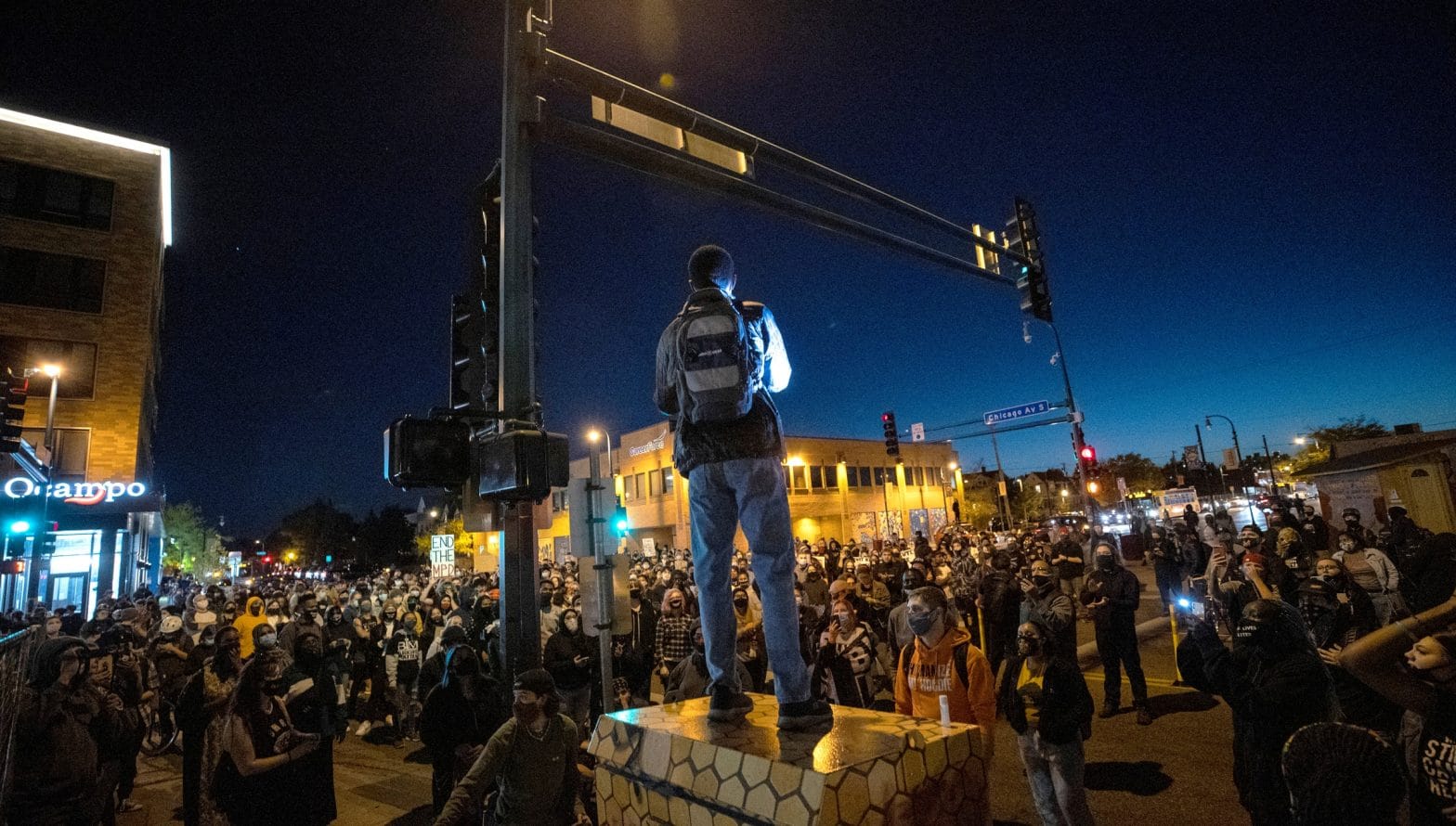
WASHINGTON – If there’s one sweeping generalization one can safely make about the people of Minnesota, it is that the vast majority of them love to participate in electoral politics.
Since 2000, no fewer than 70% of registered voters have turned out to cast their ballot in a presidential election. In 2004 and 2008, voter participation topped 78%, and even in off-years, participation remains high, according to the Minnesota Secretary of State’s office.
For example, the 2018 midterm elections saw 64.25% of registered voters turn out to express their preference in the candidates, including more than 213,000 who registered at the polls.
And most political observers in the state expect the 2020 election to be no exception to the norm.
“We’re the highest voting state per capita, and I think it’s something people are proud of,” said Mike Erlandson, a former chairman of the Minnesota Democratic-Farmer-Labor Party recently.
“I mean, they certainly do show up and vote here,” he said.
Erlandson, who confessed he’s been involved in politics in both Minnesota and Washington, D.C. for going on three decades, went on to say he believes there are a number of reasons his fellow Minnesotans feel compelled to get out to the polls.
“One, I think, is that Minnesota, relatively speaking, has a highly educated population,” he explained. “The state also has one of the higher median incomes in the nation, and we also have had this long tradition of attracting immigrant populations that are very civic-minded.”
“That goes all the way back to the earliest Scandinavian immigrants, and we see it today with Somalian immigrants, who tend to be very engaged in civic activities and voting as well,” he said.
David Schultz, distinguished professor of political science at Hamline University in St. Paul, Minn., and author of the book “Presidential Swing States: Why Only Ten Matter,” said other factors also play a part in explaining the state’s high turnout numbers.
“We have strong competitive parties here in the state that mobilize voters, and we also have some of the easiest voter registration laws in the United States,” he said.
Months of Unrest Dampen Enthusiasm
But the excitement that ordinarily sweeps over the state when a presidential election contest looms was tempered dramatically in May when George Floyd, a 46-year-old black man was killed by police after allegedly buying cigarettes with a counterfeit $20 bill.
Floyd’s death while in a chokehold touched off months of unrest, hundreds of street protests across the nation, and inspired calls to defund police departments.
Schultz, who lives just blocks from the convenience store outside of which Floyd died, avoided the legal issues surrounding the case as he discussed its ramifications for the election, and instead talked of the tragedy as a kind of high water mark in the mobilization of voters.
“I think, in the initial aftermath what we all saw was this tremendous motivation to be involved in the cities, and this same tremendous motivation to be involved in the suburbs, and then we saw the demonstrations and the riots,” he said.
“At that point, Trump tried to take advantage of the situation, capitalizing on the damage done during the riots, and I think he did make some headway, briefly,” Schultz said.
“But now, several months past those events, a lot of other things have happened. We’ve had the economy struggling, we’ve had a resurgence of the coronavirus, we’ve had the very political conventions, Justice Ginsburg dying and the controversial naming of a replacement before the election, and we’ve had Trump himself come down with the coronavirus.
“And what I think happened was, not that the anger over the George Floyd situation dissipated, but that attention moved back to other issues of concern to voters in Minnesota and other states,” he said.
If that continues to be the case remains to be seen. On Wednesday, 51 people were arrested during protests after the former Minneapolis police officer charged in George Floyd’s death was released on bail.
After Trump gained little traction from the law-and-order message he expounded upon in his convention speech, he tried to pivot back to the economy, and promised it would rebound as soon as the pandemic was subdued.
Instead of improving his fortunes, the campaign — as measured by the polls — remained moribund.
“And this past week,” Schultz said, “Trump probably had the worst week of his presidency and his campaign, at least in Minnesota, collapsed.”
“It’s going to be hard for a national presidential campaign to recover that momentum, even if it focuses only on the critical swing states,” he said.
Victory Here Could Mitigate Losses Elsewhere
Ever since he narrowly lost Minnesota in 2016, Trump has reportedly believed that a victory here — in a state which hasn’t supported a Republican presidential candidate since Richard Nixon in 1972 — could offset potential losses in other states.
Over the course of his first term in office, he and Vice President Mike Pence repeatedly visited the state and he kept tabs on issues — tailoring his policies accordingly — that were important in the most rural parts of the state.
In 2016, Democratic Hillary Clinton won the state by just 1.5 percentage points — just 44,593 votes — he could make that up this time around, the thinking went.
But in a sign that all of those intentions are now in the president’s rearview mirror, the Trump re-election campaign pulled millions of dollars in television advertising from Midwestern states and turned its focus to the Sun Belt.
The cuts included a $5 million reduction in his TV ad budget in Minnesota, cancellation of $2 million in ad buys in both Michigan and Wisconsin, and another $2.5 million in ad buys in Ohio.
“If you had asked me as recently as two weeks ago, I would have probably described the presidential contest here in Minnesota as a battle royale, but that’s changed considerably,” Erlandson said.
“If you look at the polls, Joe Biden seems to have a more comfortable lead here, and I think the dynamics are shifting in other races as well,” he said.
The ramifications are being felt in races throughout the state.
Turnout is Key
Erlandson said understanding turnout — alongside issues and personalities — is a key to understanding the intensity of campaigns in the state.
“I mean, every member of Congress represents a district that’s roughly the same, population-wise, but voter turnout in individual districts varies widely,” he said.
He then went on to suggest that Minnesota’s 3rd Congressional District, currently represented by Democrat Dean Phillips, may well be the highest voting congressional district in the entire country.
“There may be as many as 200,000 votes cast in that district this year, compared to 25,000 in a district in rural Alabama or Georgia or Mississippi,” he said. “That’s not a critique of any place, and it may simply be trivia, but I think it does make running for office in Minnesota that much more interesting, because of the number of votes you need to get to win here.”
Aside from turnout, the other thing one hears a lot about when talking Minnesota politics is that the state has not voted for a Republican presidential candidate since President Richard Nixon won there in 1972.
“For instance, in the 7th Congressional District, a very red district which is currently represented by Collin Peterson, a Democrat, all signs pointed to this being a favorable year for a Republican challenger,” Erlandson explained. “Polling I’ve seen suggests President Trump still has quite a bit of a lead in that district. But he’s not ahead to the degree that he was at this time in 2016.
“So I think support for Trump has slipped in Minnesota, especially as people are settling in and paying more attention, and the president’s cavalier performance in the first presidential debate didn’t help,” he said. “Something like that has an impact on people that may have still been on the fence.”
Of course, there are many in Minnesota that will tell you the state’s apparently brief infatuation with Trump in 2016 was an aberration. Among them is the author Garrison Keillor, the creator and long-time host of the Prairie Home Companion radio show, which ran for decades on public radio, who told The Well News “Donald J. Trump and Minnesota always were an odd fit.”
“Soybean farmers voting for a New York real estate tycoon, a big talker unable to admit mistakes, however slight, and in the past four years his character has been seen clearly,” Keillor said.
“Most Trump voters had misgivings from the start and those have grown,” he continued, adding that Trump “is rather exhausting to follow.”
“This works against him. The thought of having to listen to that voice for four more years is daunting, even if you agree with him on some points. He’s gone,” Keillor predicted.
Erlandson wasn’t quite so ready to go that far, but he rated the race as of a few days ago “a toss up.”
“And what I think that tells you is that things have swung significantly toward Joe Biden the closer we’ve gotten to election day, and that’s obviously good news for people like Democratic Sen. Tina Smith,” he said.
Smith is running against Republican Jason Lewis, who is well known in the state as a flamboyant conservative talk show host, very much in the mold of Rush Limbaugh.
“I’ve known Jason for years and consider him a friend — and he’s a formidable candidate because he knows how to work a crowd — but I think his race has been defined by his being a supporter of Donald Trump,” Erlandson said.
“Now, if Trump comes back and wins Minnesota, Jason Lewis still has a chance of winning, but that’s less likely now than it was during the summer,” he said.
Compounding Lewis’ difficulties, this past week he began a self-quarantine after being exposed to someone who tested positive for the coronavirus.
“Congressman Lewis is currently feeling fine and displaying no symptoms,” read a statement from his campaign. “All campaign staffers who were in contact with congressman Lewis since Monday are also self-quarantining and will be tested.”
Lewis was one of a handful of prominent Minnesota Republicans who mingled with President Donald Trump in Minnesota a week ago Wednesday — shortly before the president revealed his own COVID diagnosis.
Lewis announced on Monday that he tested negative. But his campaign said Wednesday that the exposure to the other infected individual came that same day.
Erlandson said in addition to aligning themselves with the president, Republican candidates have generally relied on “going negative” against their Democratic opponents.
“This is true of Jason Lewis, and it’s also true of Michelle Fischbach, who is running against Collin Peterson,” he said. “This is out of the norm here. Neither Republican candidate is spending any time or money trying to define themselves.
“Typically, people talk a bit more about policy, and argue ‘vote for me because I care about your education or your health care’ or whatever. This year, the challengers have been trying to box incumbents in and cast them in a bad light.
“It’s been more ‘vote against them’ rather than vote for me,” Erlandson said.
Schultz said Peterson has engendered “enormous good will” among his constituents precisely because he hasn’t been on the attack.
“At the same time, he voted against the impeachment. He votes pretty conservatively, and he’s pro-life,” Schultz said. “Most importantly, though, he brings hundreds of millions, if not billions in ag money back to the 7th District, so I think he can survive whatever the Republicans throw at him.
“Now, Fishbach has not garnered the same level of support, but if Trump were to win the state, Fishbach would win with him. The problem with Trump is I don’t see him having the kind of support that will carry him to victory across the state.”
In Minnesota’s 1st Congressional District, incumbent Republican Rep. Jim Hagedorn has also aligned himself with Trump, but given the conservative tilt to the agriculture-heavy district, Erlandson said Hagedorn likely won’t be hurt as much by any electoral decline in Trump’s fortunes.
“It’s an interesting race though, as the Democrat, Dan Feehan has been a strong candidate, and it is a district where Democrats have won before, including our governor, Gov. Tim Walz.”
Sudden Death Upends Election
One Congressional race in Minnesota that likely won’t be decided in three weeks time is the one in the 2nd Congressional District, where Democrat Angie Craig was expected to win re-election after a tough race.
Three weeks ago, the contest was up-ended by the sudden, unexpected death of Adam Charles Weeks, the 38-year-old candidate of the Legal Marijuana Now Party.
Weeks’ death triggered a provision in state law that it be pushed to a special election in February. Craig has challenged the law in court, but a decision is pending. In the meantime, she and her Republican challenger Tyler Kistner continue to run television ads and hope the vote in the district will go on.
The law in question went into effect after the death of Sen. Paul Wellstone, which necessitated the naming of a candidate to run in his place just days ahead of the election. The law was meant to prevent that from happening again, but supporters of Craig say it puts her at a disadvantage.
“Craig is known to have done a good job, but if a special election is held in her district, the full force of the Republican and Democratic National Committees will be on the race, and that’ll be another wild card in the contest.
“Obviously, whoever wins the White House, the opposing party is going to desperately want a win in that district to send a message right after the inauguration,” Erlandson said.
He said unlike most Republican candidates this election cycle, Kistner has not so closely aligned himself with the president.
“Of them all, he’s probably the one that is running as much like an Independent as he is a Republican,” he said. “So it’s likely that race is going to be close, whenever it is held.”
Issues and Ads
When it comes to issues, none are bigger in Minnesota than the coronavirus pandemic and the killing of George Floyd in Minneapolis and the civil unrest that followed.
“Both those issues have been omnipresent in the nation, of course, but they certainly are here,” Erlandson said.
“The idea of whether you’re with the police or not, or want to defund police departments or not is very real,” he said.
Most of the state’s television advertising emanates from Minneapolis and St. Paul, and with Rep. Ilhan Omar, D-Minn., running in a high profile primary in the 5th Congressional District this summer, that meant ads attacking her position on the police ran statewide for weeks.
Erlandson said that has likely been a liability for other congressional candidates — like Collin Peterson — because the messages emanating from Omar’s district didn’t play well in more conservative parts of the state.
“Conservative voters in small towns in those districts are looking at Minneapolis and St. Paul and saying, ‘Look at these crazy blue areas, they’re out of control! We can’t have more of them, right?”
“If you’re running statewide, like Joe Biden or Tina Smith, it probably doesn’t hurt you as much, what you might call a ‘guilt by association.’ But if you’re running in a more rural district with deep pockets of red, you’re basically forced to run as an independent, focusing on either the issues or your record.
“That’s what Dan Feehan is doing in his race with Jim Hagedorn,” he continued. “Basically he’s having to make the case that Hagedorn doesn’t really reflect the 1st Congressional District and that he’s only about Trump and he is not about you and your family.”
“In a sense, this is where Democrats with a chance of success in the state can take some cues from Biden,” Erlandson said. “When voters here look at Joe Biden, they see a guy who looks a lot like them. They think, ‘He may not be from Minnesota, but he’s a regular guy.’
“Most importantly, a negative in the perception of Biden has not materialized, and people see him as a steady hand who can be put in charge of things,” he continued.
Things have changed so much in Minnesota’s election landscape in recent weeks that Schultz admitted he’s cut his home state from his list of battlegrounds.
“After I wrote my book, I cut the list from 10 down to seven, and then shaved the list down to six, which held for a while. However, if what I’m currently thinking is correct, then Minnesota is off the list as well,” he said.
In the second edition of his book Schultz argued that in every national election cycle, it’s not states themselves, but one or two counties in certain swing states that determine the outcome of an election.
“What I said was, everything you need to know about the 2020 presidential race will be determined by 10% of the voters in 11 counties dispersed across seven swing states,” Schultz said. “Those are the voters who will determine who gets to 270 Electoral College votes.”
“As recently as just a couple of days ago, I was down to 10% of the voters found in nine counties dispersed across six states will make the difference,” he said. “Now I think it’s only three states — Wisconsin, Pennsylvania and Michigan … and if I really wanted to be reductionist, I’d say, it could all come down to just one or two counties in Wisconsin on Election Night – Milwaukee County and Brown County.
“In real numbers what we are talking about, in my opinion, with this election being so polarized, that it may come down to the movement of just 20,000 to 30,000 voters in just a few states that really determines who wins,” he said.
With that, Schultz was back mulling the possibilities in his home state.
“Four years ago, Trump only got 2000 more votes in Minnesota than Mitt Romney had gotten in the previous election,” he said. “And the big difference was voters stayed home in Hennepin County, which is where Minneapolis is. … if turnout goes up to at least what we think is typical in terms of turnout, that could be a big determinate of who wins here.
“The other possibility for a bellwether county is Mower County in Southern Minnesota,” he said. “It’s where the city of Austin, Minnesota is located and it is home to the Hormel Foods Corp. … a traditionally blue collar county.
“Four years ago and for the first time in who knows how many decades, the county went for a Republican — Trump — but in 2018 it flipped back again to the Democrats. So an argument could be made that either Hennepin or Mower County will tell you everything you need to know about who is going to win the state,” Schultz said.














